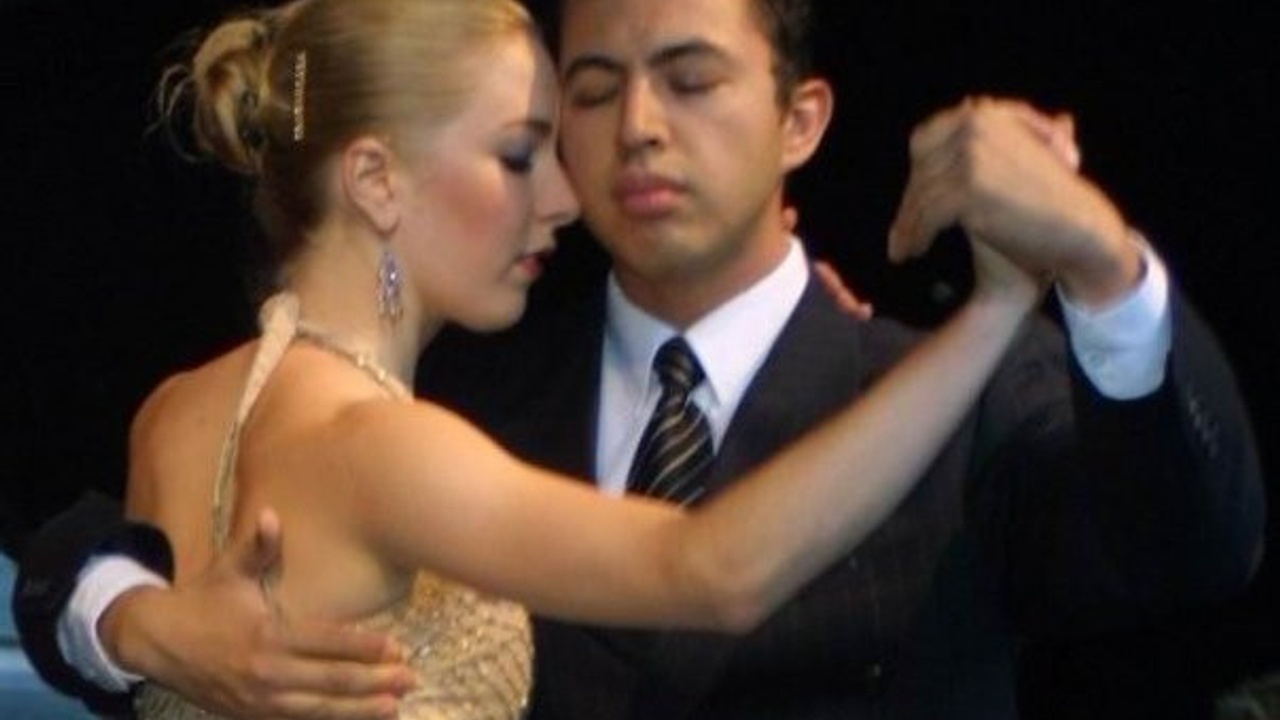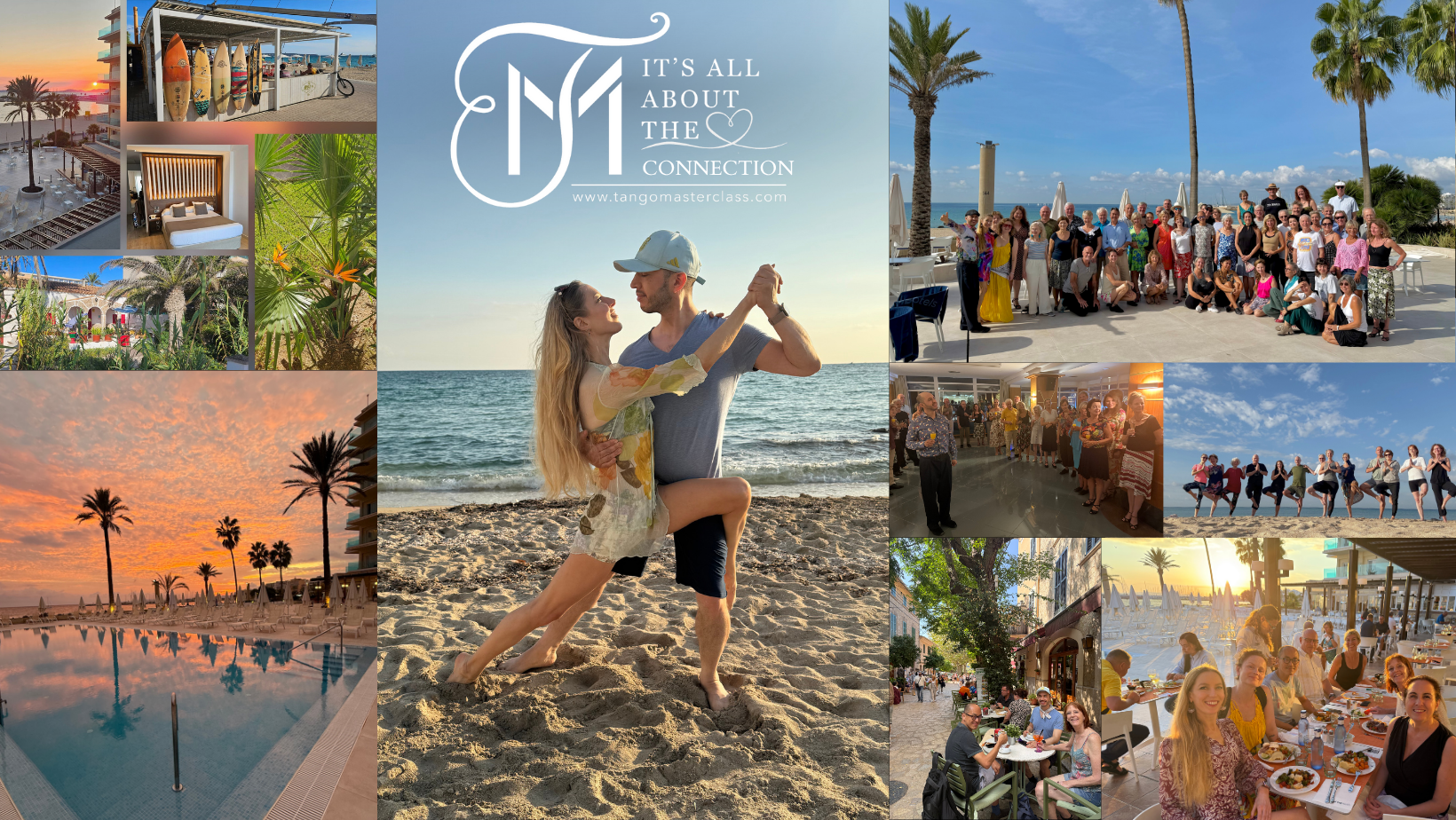Solo Tango
Oct 27, 2021
Photo taken during a performance for the opening of the cultural season in Amsterdam (Uitmarkt, main stage), during the time that I only trained solo. Photographer: Bert Verleur.
20 October 2021, by Cosima Diaz Campos
This blog is about what solo tango training means to me, and why I think it is so important for every tangodancer.
Why I started solo tango training
At the start of my tangolife I trained solo. Mariano had a dance partner with whom he trained at least three times a week for a couple of hours, for their theatre shows, and he did not want to train with me. He only danced with me at milongas. He had taught his ex-girlfriend tango from absolute beginner to professional, and he did not want to fall into the same trap again. So his plan was to never dance professionally with his girlfriend. We all know that plan failed, but let's save that story for another time. In this blog we will go deeper into my own experience of solo training, and the experience of our students.
I wanted to improve my tango dancing as fast as possible, because I was completely spellbound with this dance. I went to prácticas and milongas many times per week, dancing with many different dance partners, waking up the next morning with burning feet. That was a great way to learn to follow intuitively, and adapt to many different dance styles and bodies. But I knew I had to train my technique as well, just like I had done my whole childhood in dance classes (I joined a show ballet since age seven).
Without a dance partner, there is not much you can do other then... to train solo. And so I did. As a certified movement therapist and physiotherapist I had learned to analyse movements in a very precise manner. I knew exactly which joints, ligaments and muscles were involved. I started to analyse every movement in tango, from head to toes.
How it helped me to improve my dance fast
I created many solo excercises for balance, posture, transitions, pivots, adornos, etc. Some days Mariano would call me and ask me what I did, and I would casually reply: "today I practiced the ochos for one hour", or "today I practiced voleos for an hour." Nothing special to me, I was used to train daily for my hobbys (be it dancing, music or painting). Many of the excercises I have created in those first years, I still apply today in my tango teaching.
I could improve my balance, my musical interpretation as a dancer, my repertoire - I studied leaders steps from the beginning -, my footwork, legwork and adornos. It gave me confidence and freedom.
And apparently the improvements did not go by unnoticed: the manager and the director of the orchestra that Mariano was touring with decided that I would become Mariano's professional dance partner for the next tour. It was not our plan, but we accepted the invitation with joy.
Training solo was a blessing for me for three reasons
I still think that first period of training solo was a true blessing for my tangolife.
Firstly: when you train as a couple, and one looses their balance, it is often unclear who "started it". Did I loose my balance because of my own body disbalance, or because my partner lost his/her balance and tried to recover their balance by 'using' me? Only when you discover your own weaknesses in balance in your body, you will be able to recover your balance during the dancing without using your partner. How amazing it is to learn more about your own movements and balance, so you can connect better with another moving, balancing body.
Secondly: training solo gave me the chance to improve my dancing without any romantic relational stress. We were just starting our romantic relationship. Our relationship has always been, and still is, more important to me than tango. If I would have been Mariano's professional partner from day one, we would have had the extra burdon of training together hours a day, performing together a few times a week, and that pressure would have completely disturbed our chance to get to know each other and discover if we were suitable together to be romantic partners.
Thirdly: this experience taught me how I can guide my students to feel more free and confident in their dance. With a lot of trial and error I have discovered what works and what doesn't work when it comes to training tango solo. I still have only shared a little bit of all my experiences and ideas... more to come in the future :-)
How it helped our students to improve fast, feel confident and free
From beginner to professional, we teach every dancer technique and body awareness, in every class. We can embrace better and connect better to our partner, when we can connect more profoundly with our own body, to the ground and to the music. When we discover our own unique way of moving through space and time. Common feedback we get is: "my balance has improved so much," - "I feel more confident on the dance floor," - "no more backpain when I dance," - "my lead has become more clear and subtle," - etc.
After two decades of teaching, I am still on this mission to help dancers feel empowered; to help them feel liberated to express their feelings through the embrace, through the dance. Sharing this passion for movement, dance, music, art with you is the biggest gift of this carreer.
Special thanks to all dancers who train(ed) with us online to do this weekly tango training, connecting from our home to your home. The results are amazing. It motivates us to keep going, and to always keep improving our own dancing and our teaching!


